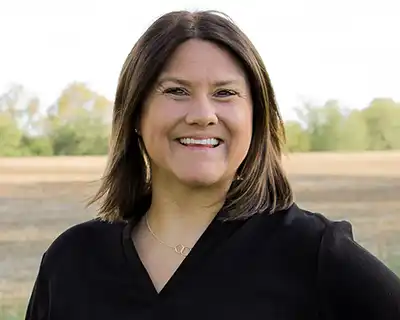Trust In Food research has found that farmers are not quite ready to enter into the carbon marketplace. Trimble is leveraging their role as data provider for farmers to cultivate a carbon market that may break those barriers.
A 2022 report from Trust In Food found that, while 93% of farmers have heard of carbon markets, 97% were not ready to participate. Trimble, a technology company that is committed to agriculture and providing farmer-focused solutions, has participated in the carbon market for nearly two decades. They’ve become well-versed in the changing carbon atmosphere and the barriers of entry that plague farmers who sit at the intersection of opportunity and change.
“Over the course of the last 17 years, we’ve seen a major shift from offsetting to insetting within the agricultural carbon market space,” says Katherine Rogers, product marketing manager, agriculture sustainability solutions at Trimble. “Due to an influx of negative press around offsetting and the general failure of many offsetting programs in the forestry space, major industry buyers, especially in the ag space, have turned to their own supply chain to drive emissions removals and reductions.
“We see this as a positive because it means that the ag industry can truly realize a lower carbon future.”
Using that expertise and farmer-centric approach, Trimble is digging deeper into the carbon landscape, introducing their new Connected Climate Exchange, which aims to break barriers of entry and help producers accelerate adoption. America’s Conservation Ag Movement recently sat down with partner, Trimble, to discuss the Connected Climate Exchange, help producers understand the program and highlight what collaboration needs to take place to ensure success.

Product Marketing Manager, Agriculture Sustainability Solutions
Trimble
One of the major barriers to carbon markets for farmers is data. How does the lack of data and reporting standardization negatively impact the current carbon marketplace?
At the end of the day, it makes it very difficult for those generating the emissions removals and reductions, which are the farmers and their advisors. When there is a lack of standardization in data and reporting structure, the farmers and their advisors are left victim to the whim of the program requirements that they have chosen to sign up with. Some programs may require manual data entry, some may require a unique suite of hardware and software solutions to automate the data collection process and some may even require the purchase of additional products such as seed, fertilizers, or biologicals to participate. All of these variables increase a farmer’s barrier to entry into a program, and ultimately hurt the supply of the carbon marketplace.
From a reporting perspective, the lack of standardization around how removals and reductions are reported makes it difficult to report on the actual impact over time. Ultimately, this is unfair to the farmers, corporations and other ag industry players who are working tirelessly today to implement carbon reduction programs on farms. This, again, poses another hurdle to keep farmers engaged in this marketplace.
Trimble recently launched its Connected Climate Exchange. Tell us about this new opportunity.
The Connected Climate Exchange is a platform that creates a streamlined process for aggregating data across farm organizations and verifying this data for emissions reductions and removals buyers. By connecting an ecosystem of farmers, agronomists, ag retailers and carbon buyers in one marketplace, the Connected Climate Exchange enables participation in carbon markets and sustainability programs that were previously too time-consuming and complex.
The Trimble Connected Climate Exchange works seamlessly with Trimble Ag Software and other third-party farm management tools to:
- Centrally manage sustainability projects and customers
- Perform calculations to report on carbon emissions, reductions and removals
- Provide reporting and visualization to sustainability impacts
- Calculate payments, where applicable
- Generate cross-sector supply chain insights
In what ways do you anticipate the Connected Climate Exchange will help farmers feel more confident to use the carbon marketplace?
As a key participant in the carbon market since 2007, Trimble offers high-quality, in-field data collection and aggregation in a platform solution that allows smooth data integrations. Over the past 17 years, Trimble has sold over 4.5 million tonnes of agricultural carbon offsets in Canada, generating over $50 million for farmers. For more than 40 years, Trimble has worked shoulder-to-shoulder with farmers and farm service providers to develop innovative agriculture solutions that drive productivity, efficiency, profitability and sustainability.
Given our long history with farmers and in the carbon market, we understand that farmers have long struggled to comprehensively report and tell their sustainability story in quantifiable and verifiable terms. We see the Connected Climate Exchange as a technology solution that will bring greater value and structure to disconnected data so farmers can more easily tell the sustainability story they have been writing for years.
From a farmer’s perspective, what will this program look like?
For a farmer, the Connected Climate Exchange, oftentimes, lets them do a lot of things they have always done before, but now they get to better track those activities and monetize them. We know that many farmers have been practicing sustainable or regenerative farming practices like reduced or no tillage, nitrogen management, using variable rate technology or slow release fertilizers, cover cropping and many other practices that go far beyond just carbon impact. However, data collection barriers in the field have made it difficult for farmers to share their sustainability story with the carbon market.
The Connected Climate Exchange makes it easier for any farmer to participate in carbon and sustainability programs regardless of what farm management software they are using or what color machinery they are running on farm. Working with their agronomist or ag retailer, any farmer can start to benefit from the carbon market. If there is interest in telling your sustainability story, the Connected Climate Exchange is the marketplace to do it.
Data can help empower farmers to optimize their operations, but also thrive in the climate-smart economy. How is Trimble and the Connected Climate Exchange making data easier to use and manage for farmers?
Data is super powerful in the climate-smart economy. However, too much data, too little data, the wrong data, or data that is too time-consuming to collect and report becomes almost useless. So, the challenge becomes creating the right data set in an automated way that doesn’t overburden the farmer or his or her advisor.
This is the entire goal of the Connected Climate Exchange. We are taking data from seemingly disparate sources and aggregating it into a complete and comprehensive sustainability data set that will allow a farmer to participate in a carbon or sustainability program of his or her choosing. And we are doing it in an increasingly automated way for more and more sustainability and carbon protocols as they are developed so that the farmer does not have to spend his or her precious time on data entry in order to reap the benefits of these sustainability and carbon markets.
This data set can then be used by interested parties such as large CPGs, in aggregate, to report on their supply chain footprint. It can also be audited by third party verifiers to ensure that as an industry we are actually meeting the goals we are setting out to achieve.
How do you anticipate that this program will scale—in the short and long term?
Today we have very specific ag retail and agronomy partners with wide reach across North America. Our goal is to scale this program in North America to address the voluntary carbon market where there is considerable interest in Scope 3 or supply chain sustainability programs. We envision the Connected Climate Exchange being the premier marketplace for carbon insetting programs in North America. However, many of the large CPGs we are working with are not only working in North America, so naturally we see the Connected Climate Exchange scaling to other markets such as Latin America and Europe.
How are partnership and collaboration integral to the exchange? Who are your partners and how are you working together to ensure success?
No one solution is going to solve all of the challenges that we face in the digital transformation of the farm. Neither is one company, industry partner, or solution going to be able to deliver the emissions reductions and removals that the world needs to avoid the disastrous effects of climate change. The only way we will see true digital transformation on farms and, in turn, a vast expansion of the climate-smart economy and a true reduction in GHG emissions, is through a strategic and integrated partner approach.
For this reason, we believe it is critical to collaborate with industry partners that make up the current landscape of the agricultural supply chain. Today we are partnering with agronomists and ag retailers who are working alongside farmers to develop key practice decisions, as well as assisting them with data management in the field and on the farm. At Trimble, it is our mission to work alongside those trusted advisors across the ag value chain to deliver additional value to farmers in the form of carbon payments through the Connected Climate Exchange.
Additionally, we are collaborating with large consumer packaged goods companies who are interested in supporting sustainable agriculture at the farm level and need a solution like the Connected Climate Exchange to (1) bring them closer to the farmer and their advisor at scale and (2) report on their supply chain impacts at scale.



